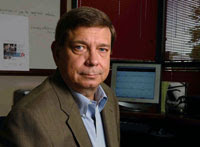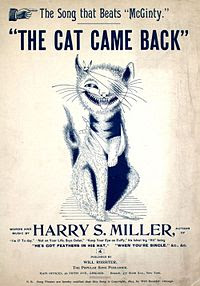This garage rock group comes from Rochester, Minnesota, just southeast of the Twin Cities of Minneapolis and St. Paul. The members included John Paulson on sax, Dave Spittell on guitar, John Spittell on bass and vocals, and Rob Thompson on drums. After a while, the lineup changed a bit. John Paulson’s brother Tom took over the drums. Jim McBean replaced John Spittell on bass, and brothers Gene and Brian Peters were added on guitar, bass, and backing vocals.
This record was made by The Sting Rays in 1967. A year later, 15 year old sax player John Paulson left the band to join another local garage rock group called The Apostles. But his career path would eventually lead him to play a key role in the production of Oscar winning movie scores! You see, John went on to create software that is used by many music production houses in Hollywood, and as a learning tool for music teachers, college professors and professional composers all over the world.
John Paulson has always loved music. He enrolled in the University of Minnesota to play in that school’s famous marching band. He graduated with a Bachelor of Science degree in music education. He worked as a teacher for a year, then entered the prestigious Eastman School of Music in New York to earn his Master’s degree. He came back to Minnesota to spend the next several years teaching music at the Wayzata Public Schools. He loved to teach kids about classical piano and Mozart, and his class in electronic composition was probably the first and only class teaching that subject at the high-school level. He could see how technology would soon transform the way music was being made and taught. He taught himself to write computer code in the 1980’s when personal computers were just getting started. He worked on his software at home, while he and his wife raised their two children. In 1982, his software had grown into a side business, leading him to quit teaching to develop a company called Springboard Software to sell his software aimed at early childhood learning. He took Springboard public in the 1980’s and left in 1990 to form another company. That company was founded around a product called Vivace. Eventually, the company name became MakeMusic and the product became known as SmartMusic. A subscription to this product gave teachers and students access to thousands of music titles and practice exercises.
I’m pretty sure I’ve found the same John Paulson who played with The Sting Rays, but I haven’t confirmed this yet. If this is the same guy, he and I share extremely similar backgrounds. While he was developing music software on his kitchen table in the early 1980’s, I was developing my own music scheduling software on my kitchen table. If my information is correct, John is only slightly older than me, and we both ended up running our own music-related software companies.
I knew none of this when I picked up my copy of The Cat, however. But I loved this song the first time I heard it. In fact, it’s one of those rare songs that I find myself playing a couple more times when I first hear it, just because I appreciate it that much. I remember running off to fetch my kids to share it with them. I especially thought they’d like the cute lyrics about a cat that just keeps coming back. Believe it or not, I’d never heard that story before. But they had!
I was shocked to learn that this song was based on a very old song written in 1893 by a guy named Harry S. Miller. It started as a folk song and became a popular children’s song. It was first recorded as a “race” record in April 1924 by Fiddlin’ John Carson. It makes sense that John Paulson would turn this into a garage rock record, considering his fascination with music. The song is often used to teach children the concepts of rhythm and tempo, which are especially compelling when played in a minor key. It’s usually sung in 2/4 time, with one weak beat followed by one strong beat. Considering this song’s extensive history, I was a bit embarrassed to admit that I’d never heard about it before hearing this version. After all, I was supposed to be the music expert in the family! As it turns out, my kids know more about making music than I ever will. I’m basically a professional listener!
So let’s get to it, shall we? Here’s The Cat by The Sting Rays on Welhaven 8852 from 1967:
Since discovering this cute tune, I’ve made it my mission to find hundreds more like it. You’ll hear them all on MusicMaster Oldies. If you think you know one that I’ve missed, by all means, share it with the class!



Here's some updated information about this record and this band, courtesy of Tom Paulson!
"Hello Joe. My name is Tom Paulson and I am someone that you made brief reference to in your article about the song "The Cat Came Back". It really was lots of fun to read the article and I actually learned more about the origin of the song. However, there were several factual errors that I wish to correct, just for the record (no pun intended). First, we recorded the recorded in 1965, not 1967. You are correct about the original band, except, I am no relation to John Paulson. The original band consisted of John Paulson on Sax, John Spittell on Base, David Spittell on Lead Guitar, and Bobby Thompson on Drums. I believe that John Paulson quit to join another band, and I was asked to join, playing Rhythm Guitar. Thompson was soon replaced on drums by Wally Scudamore, and we added Gene Peters on Organ and Guitar. Those were the players on the recording.
As far as origin of the song, I was led to believe that John Spittell and his father (a Cardiac Surgeon), found a song that was outside of the copyright range that we could record. Thus you see the "Adaptation by John Spittell" on the label. Unfortunately, I can see no logical path to a connection to John Paulson and his Vocation. The song wasn't added to our repertoire until probably a year after i joined (to the best of my recollection).
As I said, it was fun reading your article and to find our recording on YouTube. Because of the history of the song that you gave, I listened to several recordings that were earlier than ours. It was interesting to see how much of the original song was intact. And then I found a couple of recordings that were done later than ours, and was surprised to see that they used basically the same style and lyrics that we had recorded. I am now a little confused as to whether the modifications to the lyrics were actually ours or the later bands copied what we had done. The use of "Adaptation" by John leads me to believe that he may have actually created the changes, but I am not sure. I have not been in contact with John for almost 45 years and know nothing of where he is.
But thank you, for bringing to light a little background on the song that I was not aware of. And thank you for bringing to mind a lot of fond (and not so fond) memories. That was the last take of probably close to 3 hours of trying to get it "right". "Shaggy Dog" was probably done in 3 or 4 takes, as we were tired teenagers, ready to go home.
And again, thanks for the memories!
Tom Paulson
Minneapolis, MN"